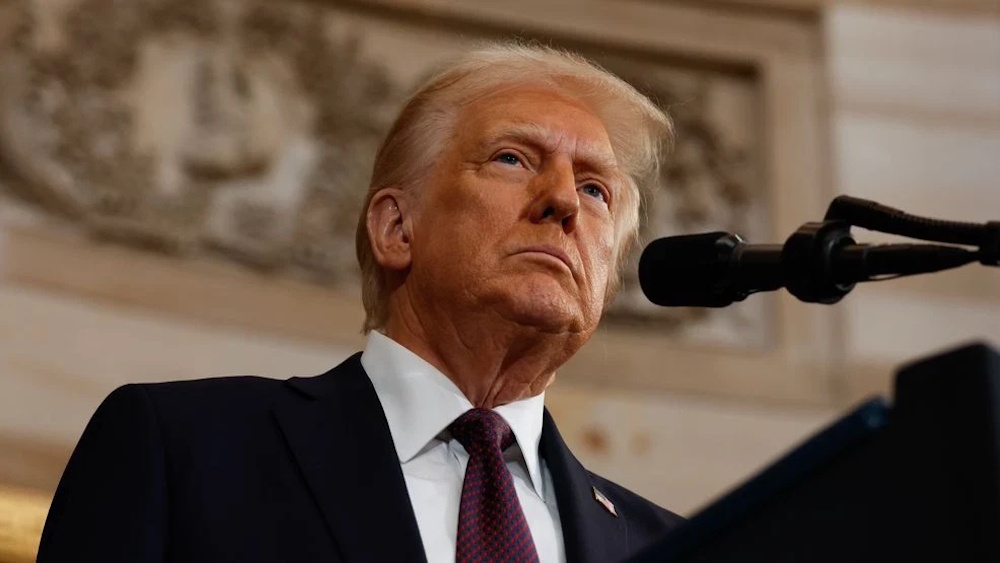
A significant portion of the American populace, transcending party lines, has consistently expressed through various polls their disapproval of President Donald Trump’s tariff-centric policies. The legality of the president’s ability to impose the levies remains an open question. However, none of that has deterred him. Instead, he is poised to implement a series of increased tariffs this week and has issued new warnings that additional measures may follow. That’s despite the fact that inflation has reaccelerated and may intensify further as businesses signal impending price increases. The US labor market is experiencing challenges due to tariffs, as employers are reluctant to expand their workforce in the face of increased economic uncertainty. Simultaneously, equities are approaching historical peaks, while mortgage rates, having remained relatively stable for an extended period, are now beginning to trend downward. This serves as the validation Trump requires to maintain his position on tariffs, even as their popularity continues to decline.
Kush Desai informed that “For decades, politicians railed against how foreign cheating and lopsided ‘free’ trade deals were destroying American manufacturing.” President Trump represents a unique case in modern presidential history, as he has taken decisive action to halt the ongoing violence. Stocks have risen while mortgage rates have declined, primarily due to the Federal Reserve’s initiation of rate cuts this month, with expectations of further reductions in future meetings. Investors exhibit a preference for lower interest rates, as these conditions typically enable companies to secure financing at reduced costs. This, in turn, assists in minimizing expenses and facilitates the achievement of profitability. Mortgage rates typically align with yields on long-term government debt, and when investors anticipate further rate reductions, those yields frequently decline. In the weeks preceding the Federal Reserve’s decision to lower interest rates, mortgage rates experienced a decline. However, the crucial point is: The Federal Reserve reduced interest rates in response to a notable deterioration in the labor market observed in recent months, raising concerns about a potential economic downturn of greater magnitude. In an effort to stimulate economic activity, Federal Reserve officials have decided to implement a quarter-point reduction and are anticipating additional cuts in the upcoming year, following a prolonged period of stability lasting nine months. In spite of expressing skepticism regarding the government’s data reporting mechanisms, the Trump administration welcomed the recently adjusted second-quarter gross domestic product figures, which indicate an annualized economic growth rate of 3.8%. This figure represents a notable increase compared to the 3.3% estimate previously reported by the Commerce Department.
The revision was largely attributed to consumer spending that exceeded earlier estimates. The sustainability of that spending is contingent upon a strong labor market; a decline in employment translates to reduced income and, consequently, diminished consumer expenditure. Currently, the unemployment rate persists at historically low levels. It reflects the hesitance of employers to increase their workforce and their unwillingness to terminate existing employees. It was widely held among economists that markets would serve as a safeguard against Trump’s tariffs. That indeed transpired immediately following the event referred to as “Liberation Day,” when Trump first announced elevated tariffs on nearly all goods imported into the United States. Bond yields experienced a significant increase as stock prices plummeted. Or, as Trump later articulated, individuals were “getting yippy.” All that exuberance, he stated, led him to alter his approach on his tariff implementation, subsequently choosing to implement a 90-day suspension on “reciprocal” tariffs, which he later prolonged to August. In justifying his decision made in April, Trump informed reporters that he had been attentively observing the upheaval in the bond market. “The bond market presents considerable complexities, I was observing it,” he stated. “The bond market at this moment exhibits remarkable characteristics. However, I observed last night that individuals were experiencing some discomfort.
As Trump persists in his efforts to impose new tariffs, investors are directing their attention to other areas. Recent months have witnessed a notable ascent in stock prices, driven by stronger-than-anticipated corporate earnings, a burgeoning optimism surrounding a potential AI boom, and expectations that the Federal Reserve may implement interest rate cuts. The S&P 500 has experienced a 33% increase since early April, at which point the index was nearing a bear market due to initial apprehensions regarding Trump’s tariffs. The benchmark index has experienced a 13% increase since the beginning of the year and has achieved 28 record highs to date. The Supreme Court is set to hear arguments in a significant tariff case in November, which may soon curtail Trump’s capacity to impose tariffs without restraint. The case examines the extent of Trump’s legal authority to impose tariffs on foreign goods, referencing emergency economic powers, which have served as the rationale for most tariffs enacted during his second term. Should the court uphold the decisions of the lower courts, determining that Trump did not possess the requisite authority, the federal government may be obligated to reimburse approximately $80 billion in tariff payments made by businesses this year. That, by no means, would inhibit Trump from advocating for increased import tariffs. Instead, the administration could employ a variety of other mechanisms to achieve its ambitious foreign policy objectives.
